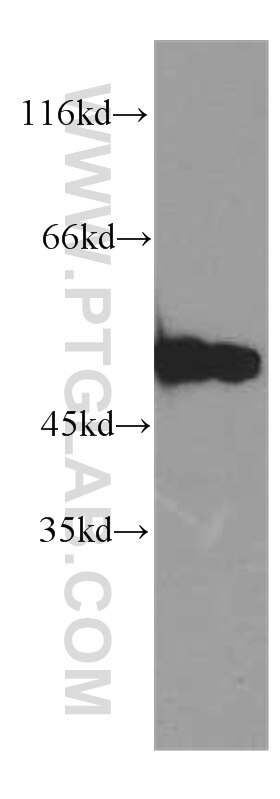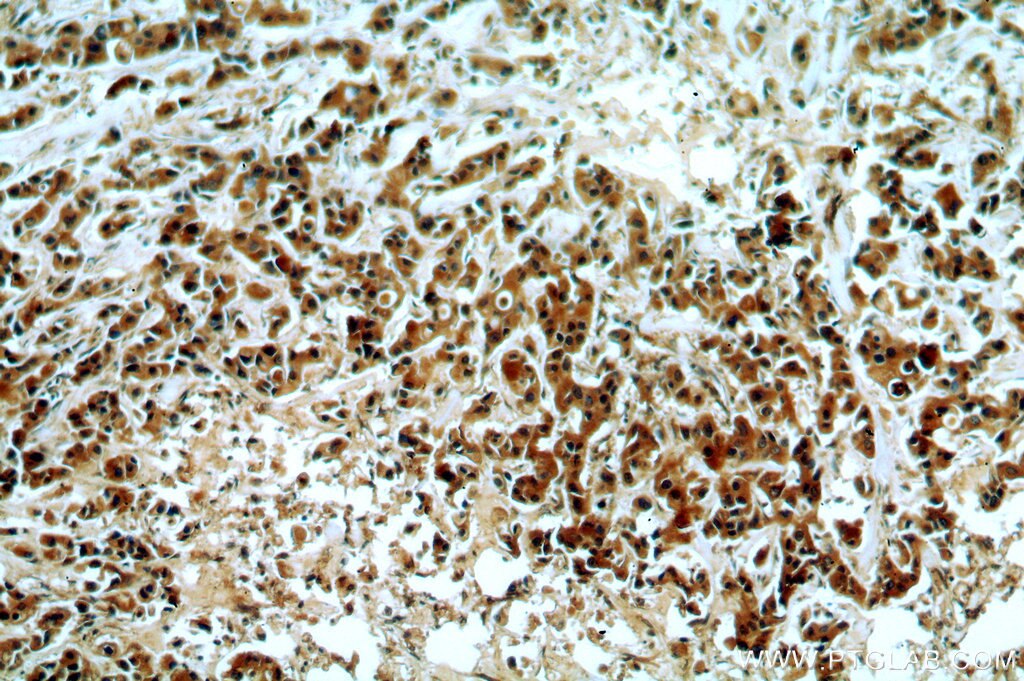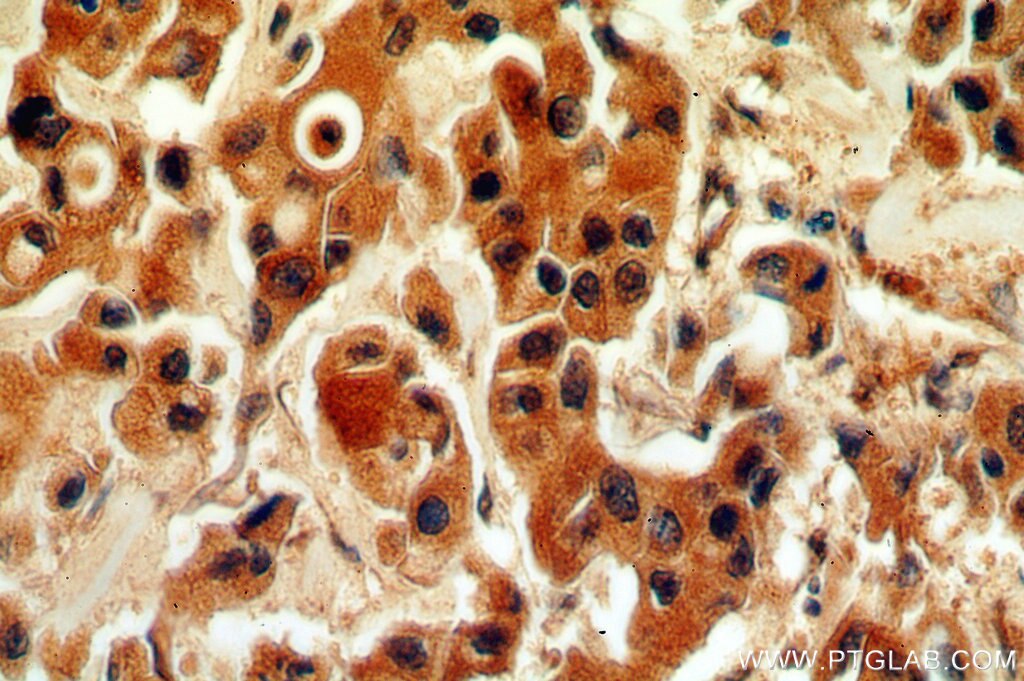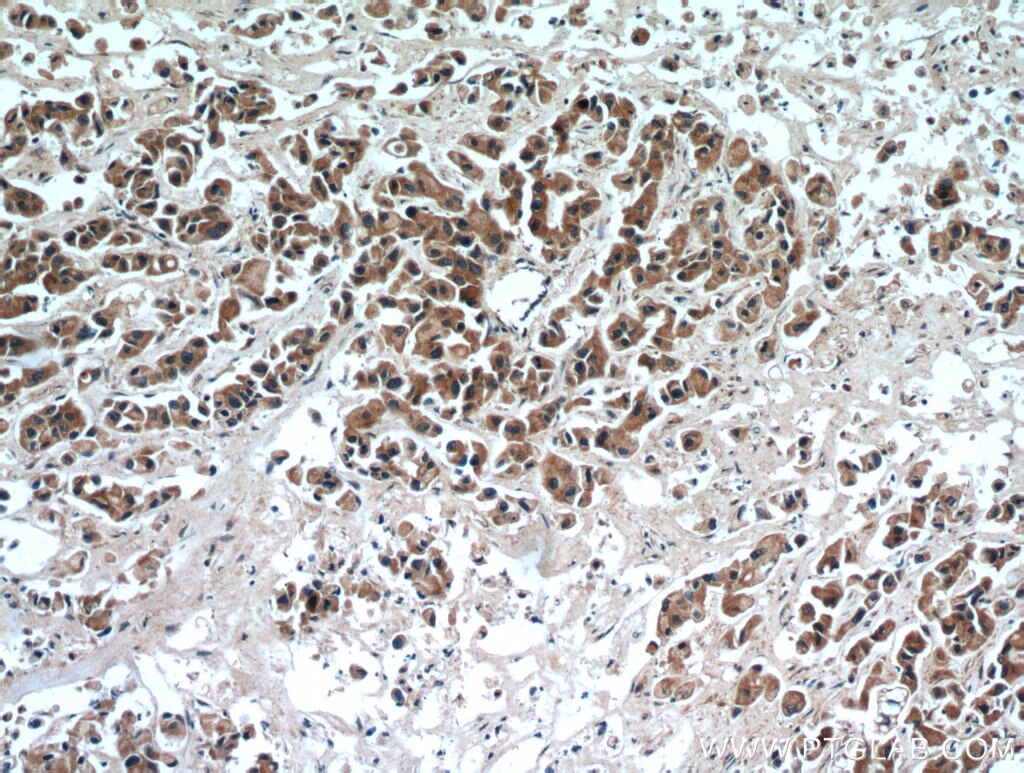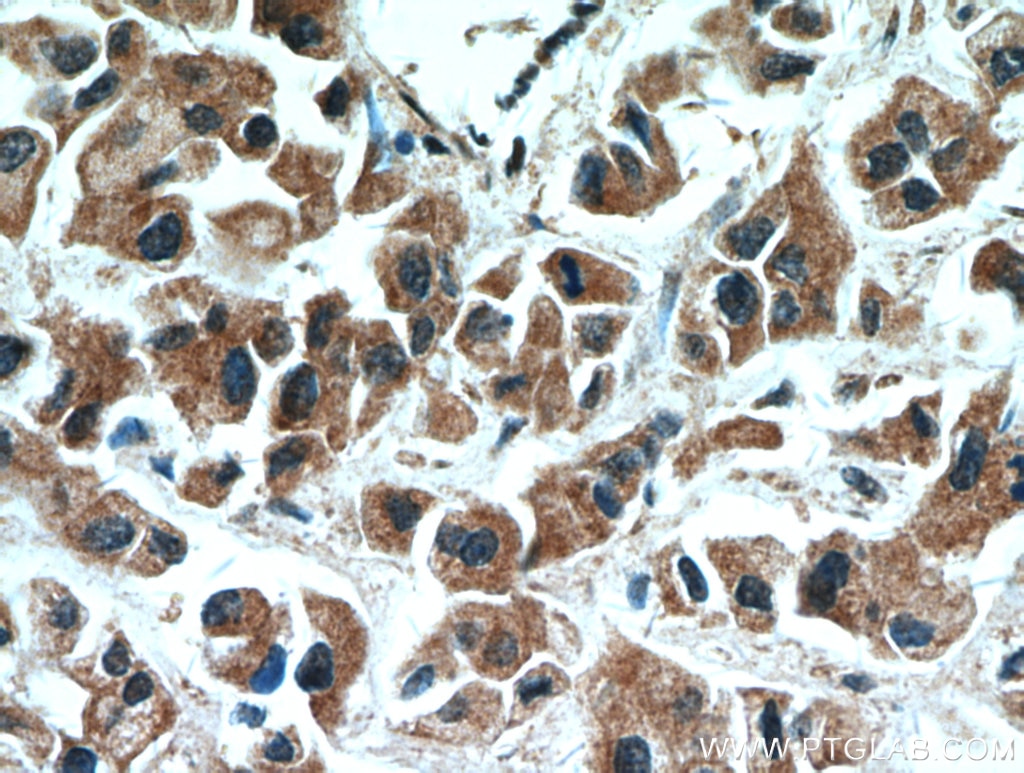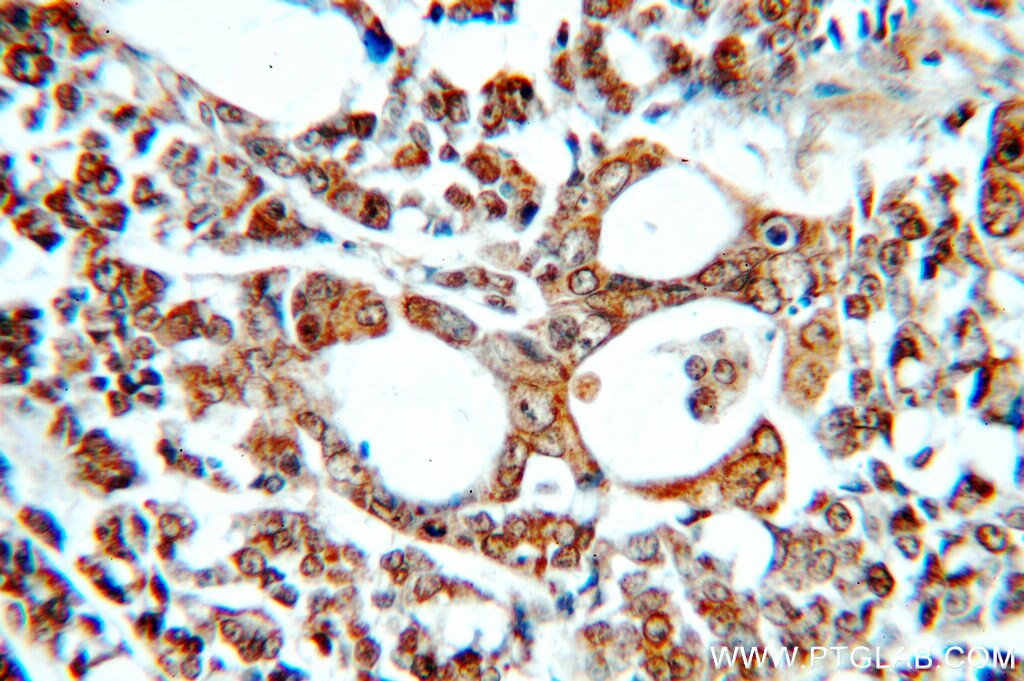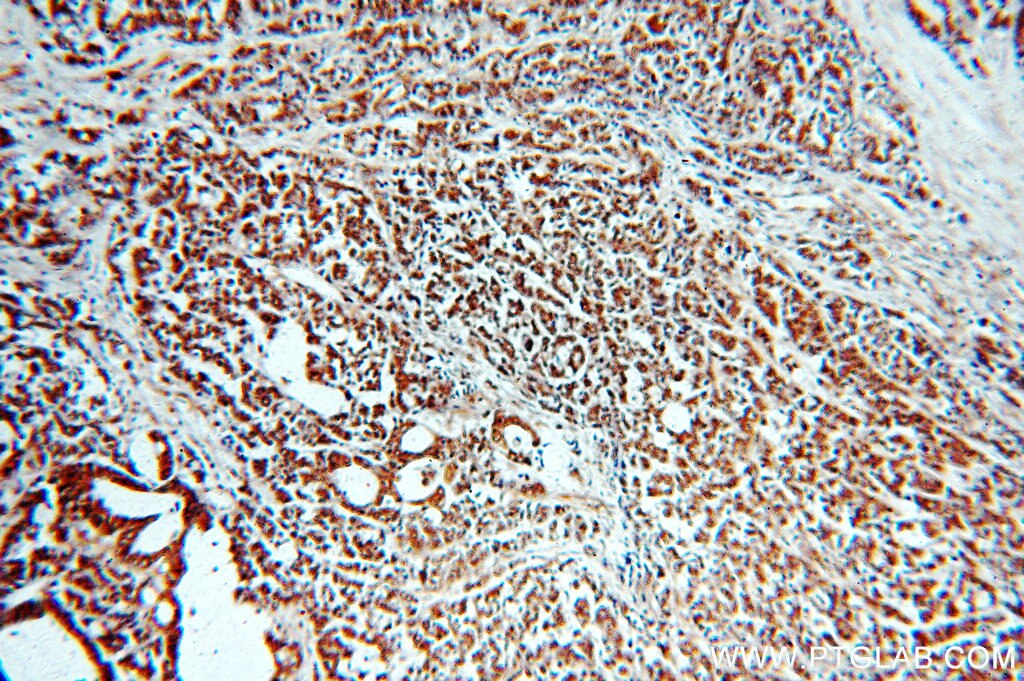Validation Data Gallery
Tested Applications
Recommended dilution
| Application | Dilution |
|---|---|
| It is recommended that this reagent should be titrated in each testing system to obtain optimal results. | |
| Sample-dependent, Check data in validation data gallery. | |
Published Applications
| WB | See 14 publications below |
| IF | See 1 publications below |
Product Information
51145-1-AP targets SMAD3 in WB, IF, ELISA applications and shows reactivity with human samples.
| Tested Reactivity | human |
| Cited Reactivity | human, mouse, rat |
| Host / Isotype | Rabbit / IgG |
| Class | Polyclonal |
| Type | Antibody |
| Immunogen |
Peptide 相同性解析による交差性が予測される生物種 |
| Full Name | SMAD family member 3 |
| Calculated molecular weight | 48 kDa |
| GenBank accession number | BC050743 |
| Gene Symbol | SMAD3 |
| Gene ID (NCBI) | 4088 |
| Conjugate | Unconjugated |
| Form | |
| Form | Liquid |
| Purification Method | Antigen affinity purification |
| UNIPROT ID | P84022 |
| Storage Buffer | PBS with 0.02% sodium azide and 50% glycerol{{ptg:BufferTemp}}7.3 |
| Storage Conditions | Store at -20°C. Aliquoting is unnecessary for -20oC storage. |
Background Information
SMAD family member 3 (SMAD3), also named Mothers against decapentaplegic homolog 3. Receptor-regulated SMAD (R-SMAD) that is an intracellular signal transducer and transcriptional modulator activated by TGF-beta (transforming growth factor) and activin type 1 receptor kinases. Binds the TRE element in the promoter region of many genes that are regulated by TGF-beta and, on formation of the SMAD3/SMAD4 complex, activates transcription. Also can form a SMAD3/SMAD4/JUN/FOS complex at the AP-1/SMAD site to regulate TGF-beta-mediated transcription. Has an inhibitory effect on wound healing probably by modulating both growth and migration of primary keratinocytes and by altering the TGF-mediated chemotaxis of monocytes. This effect on wound healing appears to be hormone-sensitive. Regulator of chondrogenesis and osteogenesis and inhibits early healing of bone fractures (By similarity). Positively regulates PDPK1 kinase activity by stimulating its dissociation from the 14-3-3 protein YWHAQ which acts as a negative regulator.The observed molecular weight of SMAD3 is about 48 kDa.
Protocols
| Product Specific Protocols | |
|---|---|
| IHC protocol for SMAD3 antibody 51145-1-AP | Download protocol |
| WB protocol for SMAD3 antibody 51145-1-AP | Download protocol |
| Standard Protocols | |
|---|---|
| Click here to view our Standard Protocols |
Publications
| Species | Application | Title |
|---|---|---|
Int J Biol Macromol Chitosan-modified dihydromyricetin liposomes promote the repair of liver injury in mice suffering from diabetes mellitus | ||
Bioeng Transl Med Reduced glutathione enhances adipose tissue-derived mesenchymal stem cell engraftment efficiency for liver fibrosis by targeting TGFβ1/SMAD3/NOX4 pathway | ||
Ecotoxicol Environ Saf Negative air ions alleviate nicotine-induced renal damage of spontaneously hypertensive rats via inhibiting oxidative stress and TGF-β/Smad pathway | ||
J Ethnopharmacol Yishen Tongluo formula alleviates diabetic kidney disease through regulating Sirt6/TGF-β1/Smad2/3 pathway and promoting degradation of TGF-β1 | ||
Biomed Res Int Multifunctional Drug-Loaded Phase-Change Nanoparticles Inhibit the Epithelial-Mesenchymal Transition of Hepatocellular Carcinoma by Affecting the Activity of Activated Hepatic Stellate Cells | ||
Int J Biol Sci Hypoxia-driven TNS4 fosters HNSCC tumorigenesis by stabilizing integrin α5β1 complex and triggering FAK-mediated Akt and TGFβ signaling pathways |

